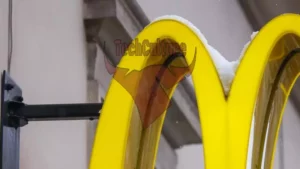NASA’s Curiosity Rover to Explore Unique Martian “Boxwork” Formation
NASA’s Curiosity rover is preparing to embark on a groundbreaking mission to explore a distinctive geological feature on Mars known as a “box work.” Located at the foothills of Mount Sharp, this formation could provide crucial insights into the possibility of ancient microbial life on the Red Planet.
The boxwork, characterized by its spiderweb-like patterns, is believed to have been formed by mineral deposits from groundwater billions of years ago. While first imaged by the Mars Reconnaissance Orbiter in 2006, Curiosity’s upcoming close-up examination will mark a significant milestone in Martian exploration.
Situated near Mount Sharp, a towering three-mile-tall mountain within Mars’ Gale Crater, the boxwork stretches between six to twelve miles in length. Its distinctive features include prominent ridges and dark sand-filled interstices. Although similar formations exist on Earth, typically found on cliffsides and in caves, none match the scale of this Martian phenomenon.
Scientists theorize that the box work originated from groundwater carrying minerals into rock fractures. Over time, erosion exposed these mineral ridges, creating the unique pattern visible today.
The formation’s potential to shed light on Mars’ past habitability has generated excitement among researchers. Kirsten Siebach, a planetary scientist on the Curiosity team, noted that the boxwork includes minerals that crystallize in warmer, salty liquid water environments. She suggests that such conditions could have supported microbial life similar to early Earth organisms.
Curiosity is expected to reach the boxwork by 2025, offering scientists a new perspective on Mars’ geological history and its potential for harboring life. This exploration promises to be a significant step forward in our understanding of the Red Planet’s past and its similarities to early Earth.




